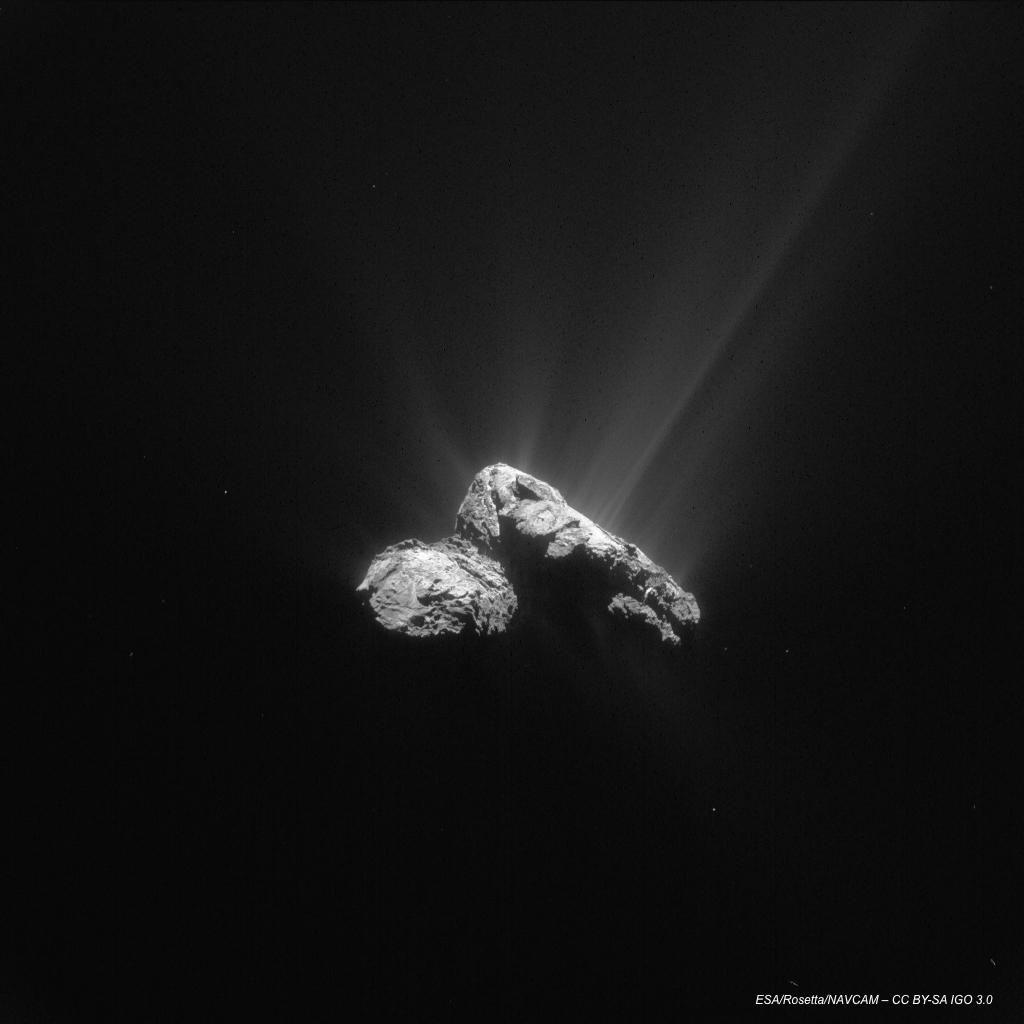Best Space Stories of the Week – Aug 16, 2015

NASA astronauts at space-grown lettuce for the first time, Elysium Space joins the moon-burial business, and Comet 67P, currently being orbited by the Rosetta spacecraft, made its closest approach to the sun. These are our picks for the best space stories of the past week.
What's for dinner? Space-grown lettuce
For the first time in history, NASA astronauts onboard the International Space Station were given the go-ahead to chew on lettuce that was grown and harvested on the U.S. side of the orbiting laboratory. The astronauts said the space-grown greens tasted "fresh" and "good." [Full Story: Astronauts Snack on Space-Grown Lettuce for First Time]
Death comes to the universe
The universe is on the decline: A new study mapping a nearby region of space showed that the energy output of the cosmos is much lower than it was in earlier days. [Full Story: It's Official: The Universe Is Dying Slowly]
Name those exoplanets
This week, the International Astronomical Union released its selection of candidate names for a group of 32 alien planets. The general public is now invited to vote on the final name selections. [Full Story: Your Vote Wanted to Help Name 32 Alien Worlds]
Get the Space.com Newsletter
Breaking space news, the latest updates on rocket launches, skywatching events and more!
Bury me at the sea of tranquility
Delivering your loved one's ashes to the surface of the moon will soon be easier than ever: The San Francisco-based company Elysium Space announced on Aug. 12 that it will fly cremated human remains to the moon. The company will make the deliveries using Astrobotic Technology's Griffin lander. [Full Story: Elysium Space Gets Into the Moon Burial Business]
Rosetta flies close to the sun
The European Space Agency's Rosetta space probe and Comet 67P/Churyumov-Gerasimenko made their closest approach to the sun on Aug. 13, coming to within 114.9 million miles (185 million kilometers) of our nearest star. Rosetta is orbiting Comet 67P, and the rising temperatures are causing an increase in activity from the space rock. [Full Story: Comet and Rosetta Spacecraft Make Closest Approach to the Sun]
Look out for asteroids
The first of two telescopes that will scan the sky for asteroids headed toward Earth is up and running on the island of Maui, in Hawaii. The scopes are part of the Asteroid Terrestrial-impact Last Alert System, or ATLAS. [Full Story: Asteroid Impact Early-Warning System's 1st Telescope Up and Running]
Smallest exoplanet ever directly imaged
The Gemini Planet Imager spotted what appears to be the smallest alien planet ever directly detected. (Most exoplanets are identified by the shadow they create across their host star.) The planet is also rich in methane, like Jupiter. [Full Story: Found! 'Young Jupiter,' the Smallest Exoplanet Directly Seen by Telescope]
NASA's next rocket engine put to the test
The engine that will operate at the heart of the Space Launch System (SLS), NASA's next-generation rocket, was put to the test on Aug. 13. During the test, the stationary engine blasted fire for 9 consecutive minutes. SLS could carry humans to Mars or other exotic locations in the solar system. [Full Story: NASA Test-Fires Engine for Next-Generation Megarocket (Video)]
A sunspot recount
A group of scientists has revised the commonly accepted method for counting sunspots (from both modern and historical data), leading to a change in the accepted sunspot number. [Full Story: Wild Sunspot Activity Looks Tamer in 400-Year Recount]
Itsy-bitsy monster black hole
A newly discovered supermassive black hole at the center of a distant galaxy is the smallest one ever found. The miniature monster is 50,000 times more massive than the sun, but less than half the mass of the previous contender for "smallest black hole."[Full Story: Tiniest Monster Black Hole Discovered]
Spock doc reaches fundraising goal
A documentary commemorating the life of Leonard Nimoy, who played Spock on "Star Trek: The Original Series," earned more than $600,000 through Kickstarter last month. However, the film's creator, Adam Nimoy (Leonard's son), said the film will need additional funding to be completed. [Full Story: For the Love of Spock! Leonard Nimoy Documentary Surpasses Kickstarter Goal]
Follow Calla Cofield @callacofield.Follow us @Spacedotcom, Facebook and Google+. Original article on Space.com.
Join our Space Forums to keep talking space on the latest missions, night sky and more! And if you have a news tip, correction or comment, let us know at: community@space.com.

Space.com is the premier source of space exploration, innovation and astronomy news, chronicling (and celebrating) humanity's ongoing expansion across the final frontier. Originally founded in 1999, Space.com is, and always has been, the passion of writers and editors who are space fans and also trained journalists. Our current news team consists of Editor-in-Chief Tariq Malik; Editor Hanneke Weitering, Senior Space Writer Mike Wall; Senior Writer Meghan Bartels; Senior Writer Chelsea Gohd, Senior Writer Tereza Pultarova and Staff Writer Alexander Cox, focusing on e-commerce. Senior Producer Steve Spaleta oversees our space videos, with Diana Whitcroft as our Social Media Editor.









